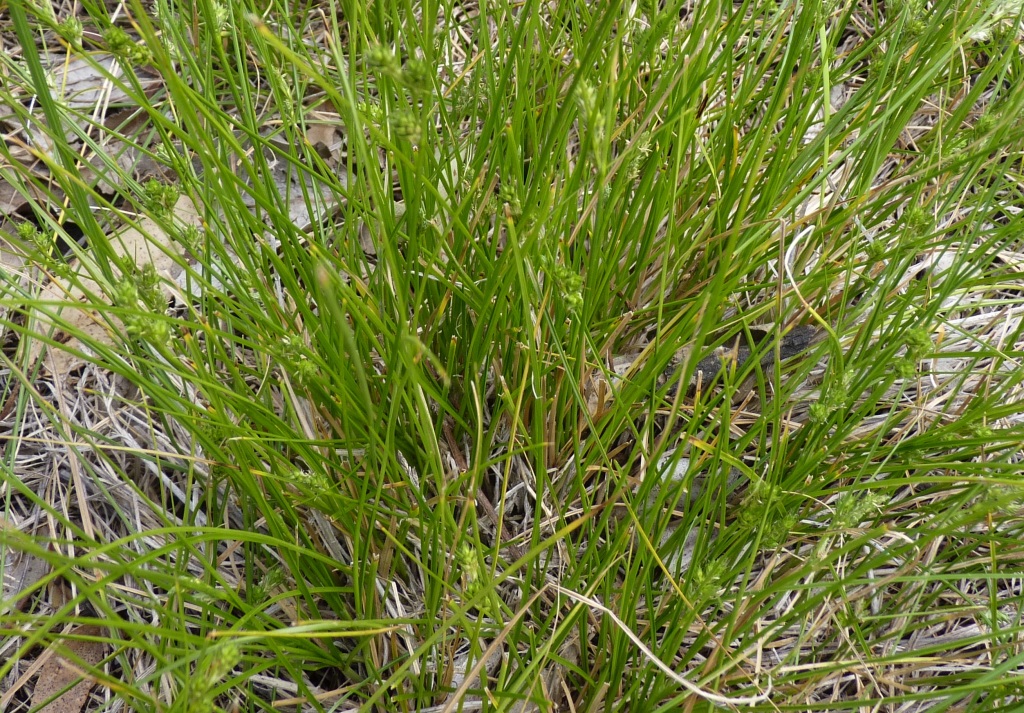Carex breviculmis
R.Br. Short-stem SedgeRhizome short; shoots densely tufted. Culms erect, terete to trigonous, smooth or scabrous, 3–10 (rarely to 20) cm long, c. 0.7 mm diam. Leaves exceeding culms, to 35 cm long, 2–3 mm wide; sheath yellow-brown; ligule obtuse to truncate. Inflorescence narrow, erect, c. 4 cm long, with 2–5 spikes solitary at nodes; lowest involucral bract exceeding inflorescence. Spikes sessile, contiguous, erect at maturity, 1.2–1.8 cm long; uppermost spike male; lower spikes female; glumes obtuse to acuminate, often long-mucronate (mucro to 2 mm long), whitish to pale brown with green midrib; female glumes 2.5–4.5 mm long; utricles 2–3.3 mm long, 1.0–1.5 mm diam., ellipsoid, prominently numerous-nerved, hispid, pale green to yellow-brown; beak c. 0.5 mm long, with apex notched; style 3-fid. Nut obovoid to ellipsoid, trigonous, pale yellow, with enlarged disk-like junction with persistent style-base. Flowers spring–summer.
LoM, MuM, Wim, GleP, Brid, VVP, VRiv, MuF, GipP, OtP, WaP, Gold, CVU, GGr, DunT, NIS, EGL, EGU, WPro, HSF, HNF, OtR, Strz, MonT, HFE, VAlp. Also Qld, NSW, Tas. Asia, Pacific islands. Widespread and common in (usually drier) grasslands and open woodlands from near sea-level to the alps, but rare on heavier soils of Wannon, Riverina and Volcanic Plain regions, and absent from the far north-west.
The only Carex species in Victoria with utricles that are pubescent all over.
Wilson, K.L. (1994). Cyperaceae. In: Walsh, N.G.; Entwisle, T.J., Flora of Victoria Vol. 2, Ferns and Allied Plants, Conifers and Monocotyledons, pp. 238–356. Inkata Press, Melbourne.
 Spinning
Spinning



